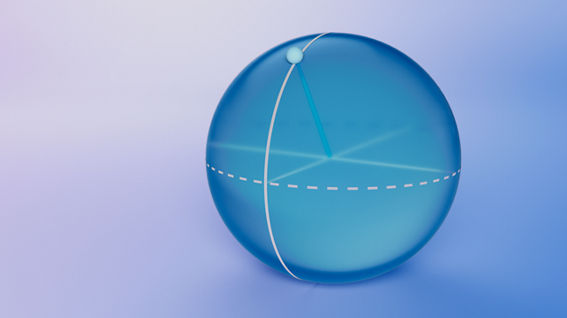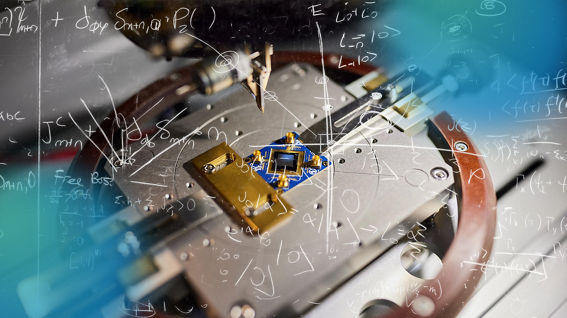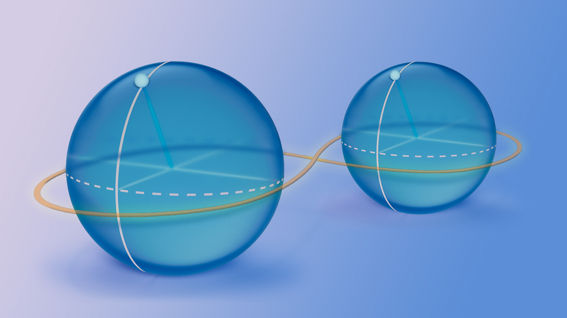Error correction is crucial for both classical and quantum computers to ensure reliable computation. However, the frequency of errors, how they manifest, and the techniques used to correct them differ between the two types of computers. Errors are extremely rare on classical computers. For example, the error rate for a standard computer CPU while variable typically measured in errors per billion (EPB) or errors per trillion (EPT). In contrast, the error rates for quantum computers are typically much higher due to the nature of quantum mechanics and the challenges associated with building and operating quantum systems. Noise, decoherence, and imperfections in quantum gates can cause errors in quantum computations. Current state-of-the-art quantum computers have error rates that are typically in the range of 1% to 0.1%, that is on average one out of every 100 to 1000 quantum gate operations will result in an error. In classical computing, errors often occur as bit flips, where a 0 changes to a 1 or vice versa. Errors on quantum computers can manifest as bit flips as well. However, unlike classical computers quantum errors can also manifest as phase flips or a combination of both. Overall, error rates in quantum computing are more common than on classical chips because quantum states are extremely fragile and sensitive to their environment.
Error correction is crucial for both classical and quantum computers to ensure reliable computation. However, the frequency of errors, how they manifest, and the techniques used to correct them differ between the two types of computers. Errors are extremely rare on classical computers. For example, the error rate for a standard computer CPU while variable typically measured in errors per billion (EPB) or errors per trillion (EPT). In contrast, the error rates for quantum computers are typically much higher due to the nature of quantum mechanics and the challenges associated with building and operating quantum systems. Noise, decoherence, and imperfections in quantum gates can cause errors in quantum computations. Current state-of-the-art quantum computers have error rates that are typically in the range of 1% to 0.1%. In other words, this means that on average one out of every 100 to 1000 quantum gate operations will result in an error. In classical computing, errors often occur as bit flips, where a 0 changes to a 1 or vice versa. Errors on quantum computers can manifest as bit flips as well. However, unlike classical computers, quantum errors can also manifest as phase flips or a combination of both. Overall, error rates in quantum computing are more common than on classical chips because quantum states are extremely fragile and sensitive to their environment.

Quantum error correction is likely to be a crucial component of practical, scaled quantum computing. The frequency of errors on current quantum computing systems means that long running or large-scale quantum algorithms are unlikely to produce accurate results. Moreover, many promising quantum algorithms, such as Shor’s algorithm for factoring and qubitization for quantum simulation, require a large number of qubits and operations, exacerbating the issue.
Quantum error correction techniques are being developed and applied to quantum systems to help protect and stabilize quantum computers from these errors, ensuring accurate computation. Quantum error correction works by encoding the quantum information in a way that allows errors to be detected and corrected. This is typically done by encoding the information into a larger set of qubits, called a “quantum error-correcting code,” which is designed to be resilient to errors. Some common quantum error correction codes include:
- Shor code: This was the first quantum error correction code, developed by Peter Shor. It uses nine qubits to encode a single logical qubit and can correct both bit flip and phase flip errors.
- Steane code: This is a seven-qubit code that can correct both bit flip and phase flip errors. It has the advantage of being fault-tolerant, meaning that the error correction process itself does not introduce additional errors.
- Surface code: This is a topological error correction code that uses a two-dimensional lattice of qubits to encode logical qubits. It has a high error correction threshold and is considered one of the most promising techniques for large-scale, fault-tolerant quantum computing.
- Hastings-Haah code: This quantum error correction code offers better space-time costs than surface codes on Majorana qubits in many regimes. For gate-based instruction sets, the overhead is larger, and makes it less interesting compared to the surface code.
Quantum error correction techniques enable the construction of logical qubits from multiple physical qubits, reducing the impact of errors on the overall computation and making it possible to scale up quantum computers. Quantum error correction is necessary to ensure the reliability of these algorithms on noisy, imperfect quantum hardware. However, it’s important to note that quantum error correction is not perfect. While it can greatly reduce the rate of errors in a quantum computation, it cannot eliminate them entirely. The rate of errors that can be corrected depends on the specific quantum error-correcting code being used, as well as the level of noise in the hardware.
Overall, many experts in the quantum computing industry believe that Quantum error correction is a crucial component for building practical quantum computers. Quantum error correction is an area of ongoing research. Here at Microsoft we are actively pursuing research in quantum error correction including the use of topological quantum codes as a means of error correction and the development of the surface code.





